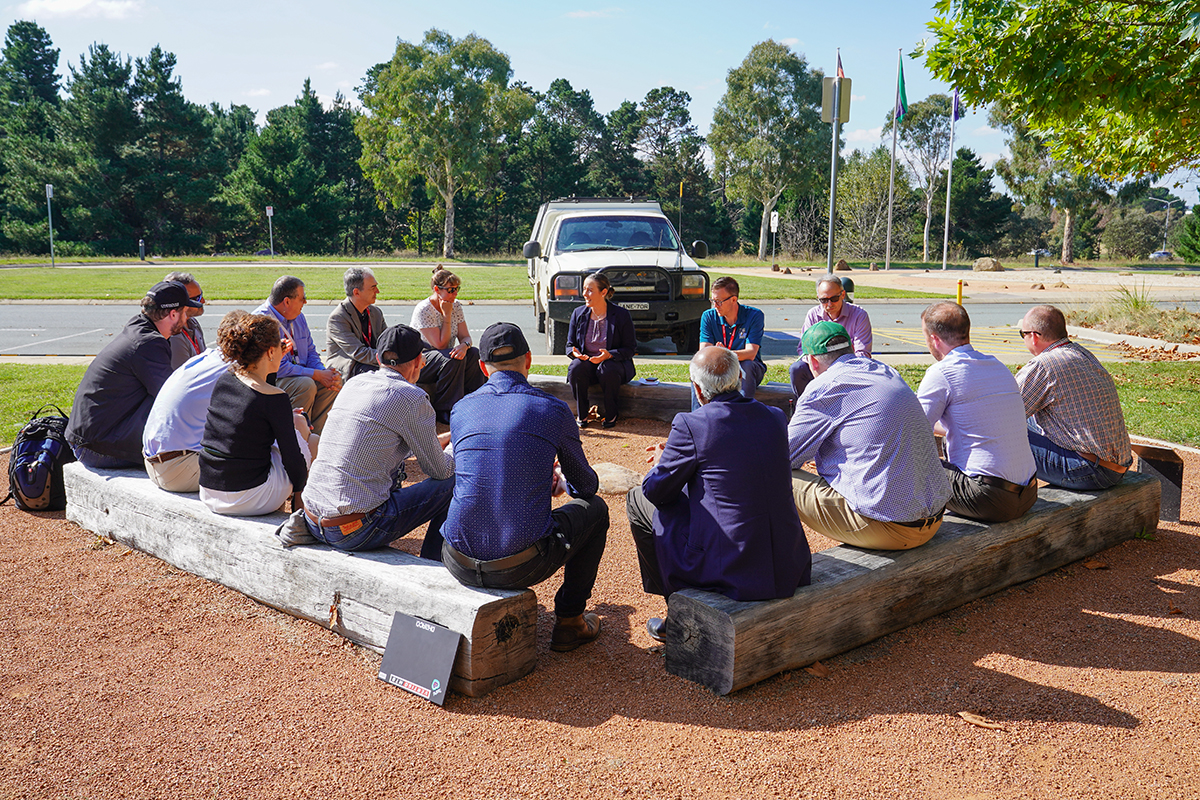United States Geological Survey visit reinvigorates close relationship and ties
7 April 2022
After more than two years of meeting virtually, Geoscience Australia was excited to bring its decades-long collaboration with the United States Geological Survey face to face again, hosting a delegation of staff from the scientific agency.
The nine-day visit was the first in-person meeting between the two nations’ geological surveys since 2019.
With a focus on space and Earth observation, both the USGS and Geoscience Australia were committed to reconfirming and strengthening collaboration. Discussions were wide-ranging, encompassing the Earth observation program of work, future collaboration opportunities and the ongoing work across the minerals and energy sectors, particularly through the successful Critical Mineral Mapping Initiative.
Geoscience Australia’s Place, Space and Communities Division Chief, Alison Rose, said the USGS and Geoscience Australia had a long history of working together for the benefit of both countries.
“I am excited about the valuable discussions we’ve had in this meeting and the renewed and refreshed collaboration that will follow,” Ms Rose said.
“We have been partners in the USGS’s ongoing Landsat program since 1979 and our satellite ground station at Alice Springs is a valuable component for this vital Earth observation program.
“Geoscience Australia is an important part of the Landsat mission: in addition to operating the ground station, we are also supporting the mission through our in-house multi-disciplinary expertise in data collection, quality assurance, and analysis. The launch of Landsat 9 in September 2021 reinforces the significance of this partnership, which is set to continue for many years into the future.
“We also have a wonderful opportunity here to make Earth observation and land remote sensing data more widely used, for example through the Digital Earth Australia program.
“This program helps Australians to use Earth observation data to make informed decisions in areas such as agricultural productivity, water availability, land use and management. This data already brings so much value to the Australian economy, and this is only going to increase.”
The United States Geological Survey’s Associate Director for Core Science Systems Kevin Gallagher said his team was “very pleased to be here in person once again with our close and longstanding partners in Geoscience Australia”.
“We’re excited to be expanding our collaboration to enhance U.S. and Australian Earth observation capabilities,” Mr Gallagher said.
Geoscience Australia is the nation’s pre-eminent public sector geoscience agency, and is working in partnership with other government agencies, including the Australian Space Agency, to deliver the objectives of the Space Agency’s 2021-2030 Earth Observation from Space Roadmap.
This roadmap is a key component of Australia’s Civil Space Strategy and seeks to unlock even more value from Earth observation. The insights and understanding gained about the planet, its environments and human activities will help to build a resilient and future-focussed economy, while at the same time supporting critical services such as disaster and emergency response.
“Science, and particularly space science, is an inherently collaborative endeavour and we always look to develop positive working partnerships with other agencies across Australia and across the world. By using our combined expertise, both partners achieve more than they could separately,” Ms Rose said.
For more information about Earth observation and space science, head to our Earth observation website.





